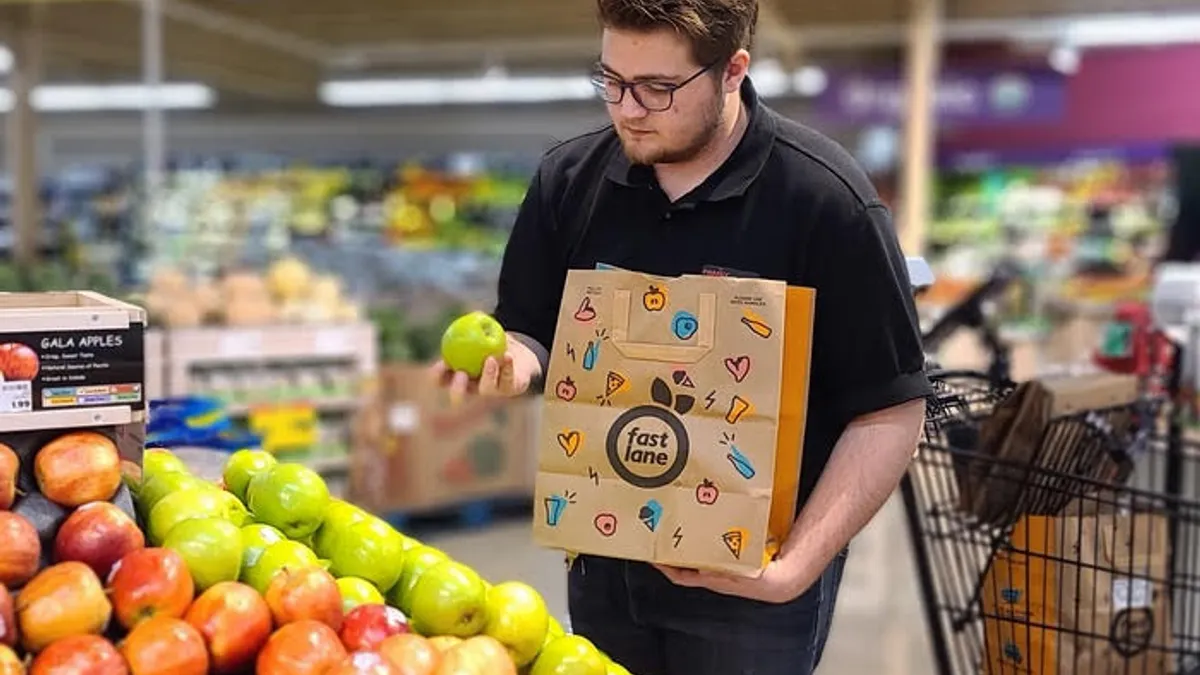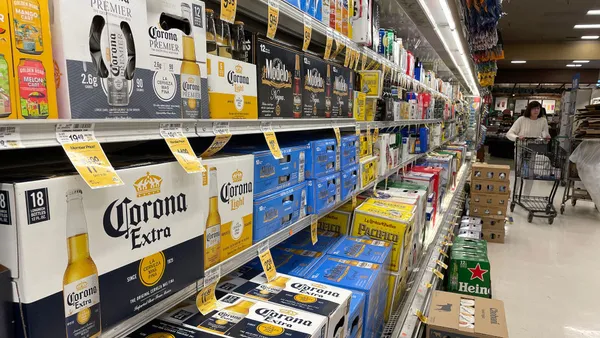Dive Brief:
- Food-at-home prices leaped ahead in August at a 13.5% annual rate — their fastest pace in more than 43 years — while overall inflation ticked down slightly on a year-over-year basis, to 8.3%, according to Consumer Price Index data released Tuesday by the U.S. Bureau of Labor Statistics (BLS).
- The food-at-home index rose 0.7% in August compared with July, continuing an unbroken string of monthly increases that stretches back to February 2021.
- Fast-rising food costs were a key reason why overall inflation in August stayed close to the multi-decade high it hit in June even as gasoline prices plunged.
Dive Insight:
Grocery prices are a highly visible indicator for consumers of how far their paychecks go, and the latest statistics are a stark reminder how tightly inflation is crimping people’s buying power.
While food-at-home inflation hasn't been negative on an annual basis since it logged a decline of 0.1% in June 2017, prices rose only in the low single digits in the months that followed until they settled at a year-over-year increase of 0.7% in May 2021, when the current surge began.
In an indication of the exceptionally large role grocery prices play in determining inflation, year-over-year inflation was only 6.3% last month when food and energy costs are stripped away. With energy prices off by more than 10% during August compared with July, that leaves food, shelter and medicine costs — all of which have been on the rise — as the primary culprits in keeping overall inflation as high as it is, according to the BLS.
Fuel prices, which, like food costs, stand out for consumers as a measure of how they are impacted personally by inflation, declined steadily last month. The average price for a gallon of gasoline in the United States fell below $4 per gallon by late August for the first time since the end of February, according to the U.S. Energy Information Administration.
While elevated grocery prices are already having a severe impact on people’s budgets, the situation could grow far more severe if food inflation doesn’t turn around.
According to research published by data analysis firm YorkTest, the average weekly grocery bill in the country could hit $300 by the end of 2024, up from $227 today, at the current rate of increase. Weekly grocery costs would top $650 by 2030 if inflation remained at an annual rate of 13%, YorkTest said, illustrating how the bite of inflation can mount to increasingly unsustainable levels.
Consumers have been changing their shopping habits as they look to outrun inflation at the grocery store. Almost 47% of shoppers in a survey conducted in late August by GlobalData indicated they had traded down to less costly brands, up from 42.5% in July. More than 41% of people in the survey shopped around more, compared with 39.9% the month before, the research firm said.













